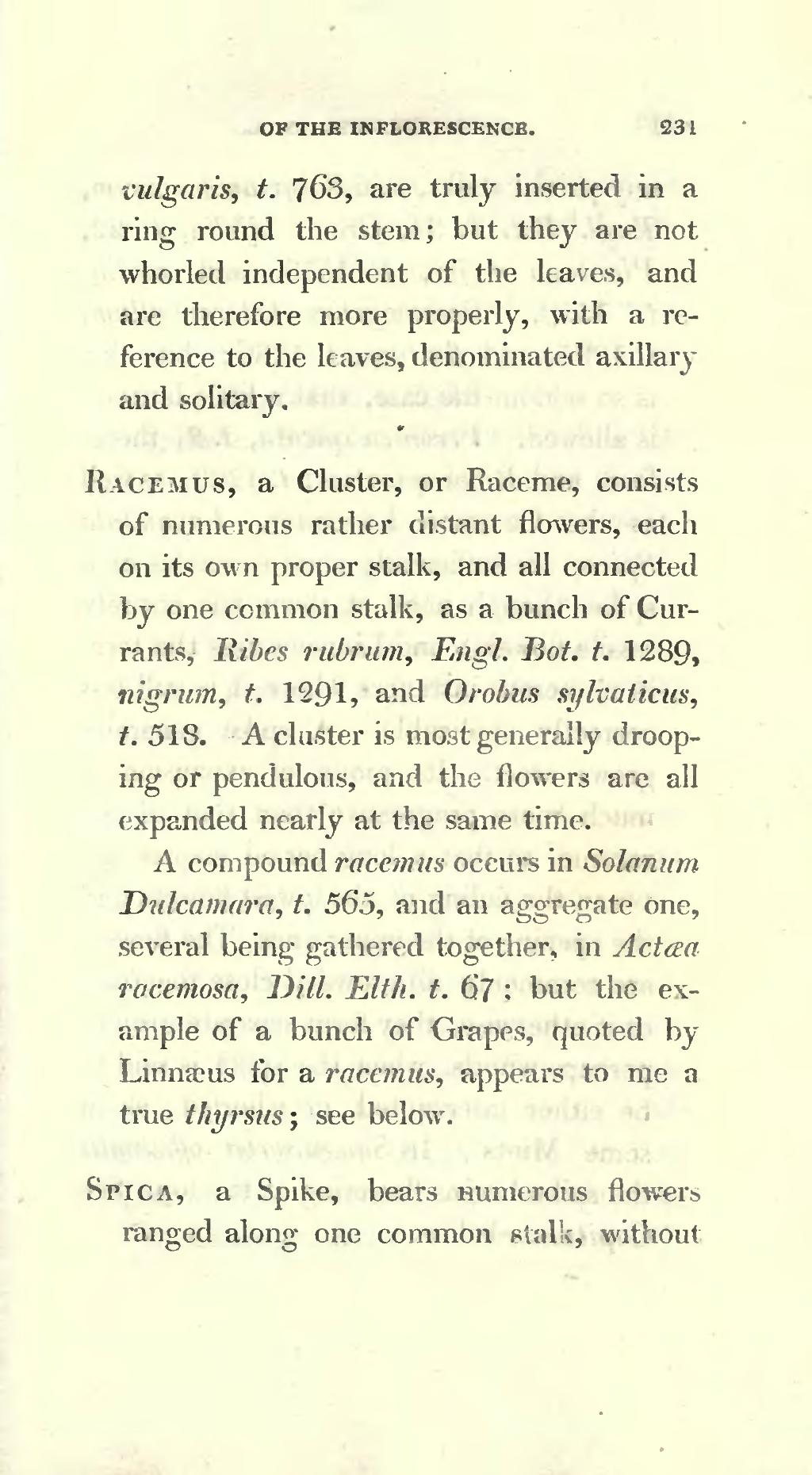vulgaris, t. 763, are truly inserted in a ring round the stem; but they are not whorled independent of the leaves, and are therefore more properly, with a reference to the leaves, denominated axillary and solitary.
Racemus, a Cluster, or Raceme, consists of numerous rather distant flowers, each on its own proper stalk, and all connected by one common stalk, as a bunch of Currants, Ribes rubrum, Engl. Bot. t. 1289, nigrum, t. 1291, and Orobus sylvaticus, t. 518. A cluster is most generally drooping or pendulous, and the flowers are all expanded nearly at the same time.
A compound racemus occurs in Solanum Dulcamara, t. 565, and an aggregate one, several being gathered together, in Actæa racemosa, Dill. Elth. t. 67; but the example of a bunch of Grapes, quoted by Linnæus for a racemus, appears to me a true thyrsus; see below.
Spica, a Spike, bears numerous flowers ranged along one common stalk, without
